
Warmer Than Average Into October? CPC, the Climate Prediction Center, is predicting a slight bias toward warmer than average temperatures through the first half of autumn for much of the eastern and southern USA. I'm not surprised - in recent years we've seen a trend toward warmer (longer) falls across much of the nation. More details below.
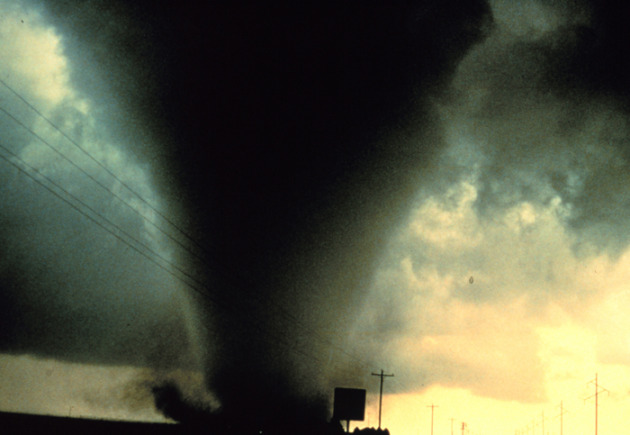
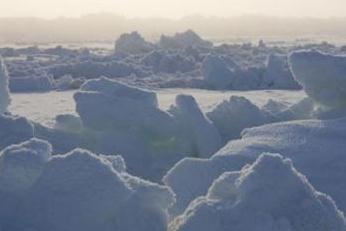
"...For Navy Capt. Tim Gallaudet, global warming isn't a political matter — it's a practical one. Over the next few decades, Arctic summers are expected to become ice-free, creating another ocean for the Navy to factor into its long-term planning. "The ice," he says, "doesn't vote." Gallaudet, who holds a Ph.D. in oceanography, is the deputy director of the Navy's climate change task force, which was established in 2009. It's part of a growing effort by the military and intelligence communities to get a grip on the national security implications of global warming." - article below on the military implications of melting Arctic ice.

Relief For Dallas. NWS Doppler radar Thursday afternoon showed outflow boundaries put down by strong storms in the Dallas/Ft. Worth area, the leading edge of cooling relief. Before the storms hit the temperature reached "only" 96, meaning the streak of consecutive 100-degree days stops at 40 days/row. Now, about that drought...

Taking The Edge Off The Heat. The same cool front that sparked waves of severe storms from Nebraska to Oklahoma also pumped cooler air southward. For the first time in 40 days the mercury did NOT hit 100 at Dallas. More details:
- Waco, TX consecutive 100°+ streak reached 43 days Thursday, overtaking the #1 spot in 1980.
- Dallas, TX consecutive 100°+ streak ended at 40 days Wednesday at the #2 spot. Thursday’s high was 96. #1 is 42 in 1980.
- Wichita Falls, TX consecutive 100°+ streak reached 51 days Thursday. #2 is 42 in 1980.
- Oklahoma City’s consecutive 90°+ streak ended at 71 days Wednesday, tying the #1 spot in 1980.

Friday Severe Risk. According to SPC a few T-storms may spark 1"+ hail and 58 mph+ winds from southern Minnesota southward to Tulsa and Little Rock.
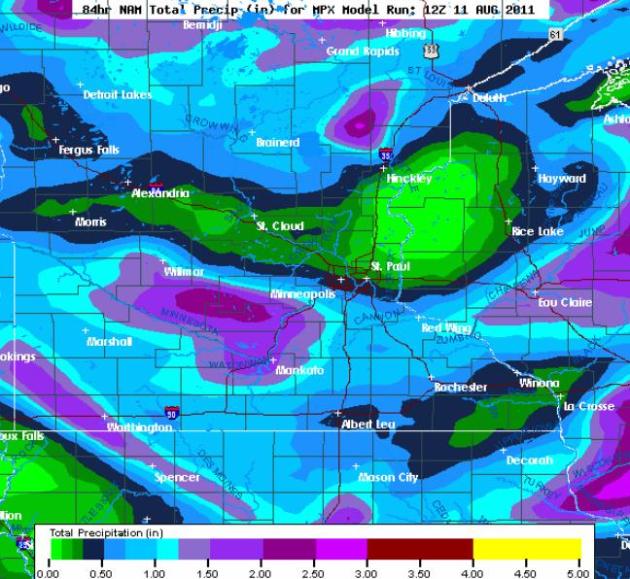
Friday: Wettest Day In Sight. The NAM/WRF model is printing out some 1-2" rains from the southwestern suburbs of the Twin Cities to Mankato and Willmar, lesser amounts over central Minnesota. The best chance of Friday storms: early morning, again mid/late afternoon.
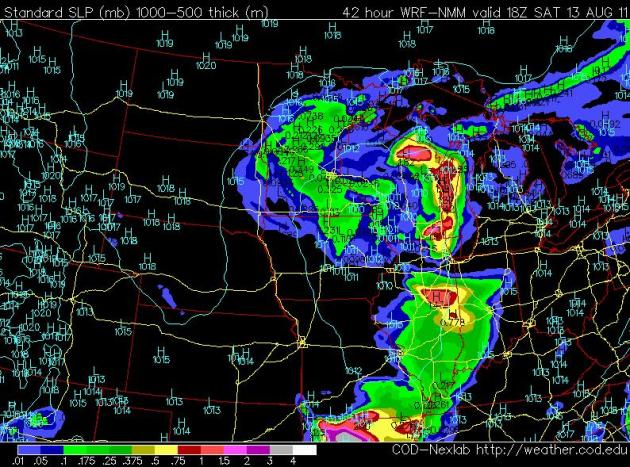
"Plan B" Saturday. Systems are moving slower, Saturday now looks considerably wetter across Minnesota, showery rains (and a cool northeast wind) much of the day, highs holding in the 60s north to low 70s south. Consider a good movie. "Another Earth" is a great flick, playing at the Uptown Theater in Minneapolis. 5 stars.
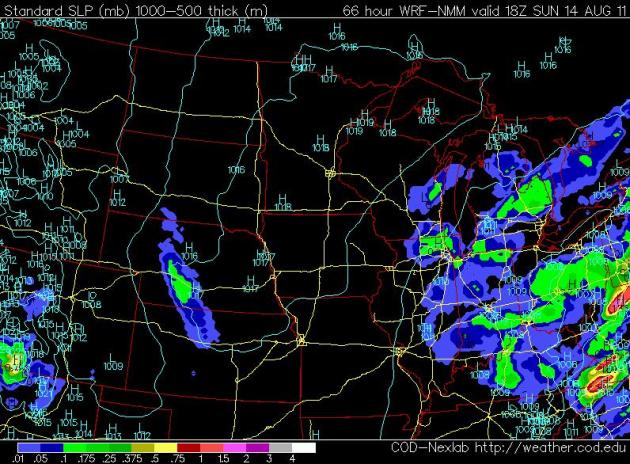
Sunday: A MUCH Better Day For Outdoor Plans. No question now, Sunday will be the better day of the weekend as a bubble of high pressure drifts over Minnesota, highs in the upper 70s (north) to low 80s (south) - dew points in the upper 50s with light winds.

"This year, namely over the past five weeks, the environments have continuously supported storm structures for damaging winds more so than other types of severe weather. Over the past 34 days, there have been 16 (47%) with at least one report of severe weather in the CWA."
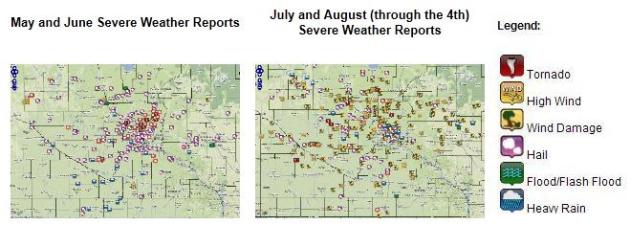
"From June 30th through August 2nd, a span of 34 days, the NWS Chanhassen CWA was under at least a slight risk for 23 of them (68%). From July 14th through August 2nd, a slight risk or higher severe threat was in effect 16 of those days, an astounding 80%."
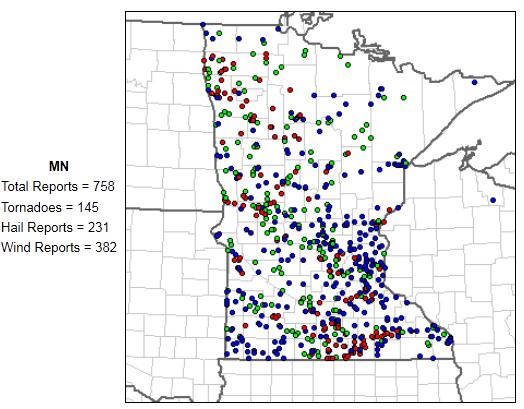

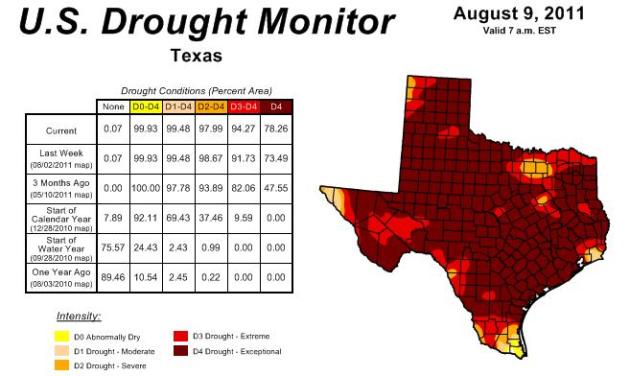

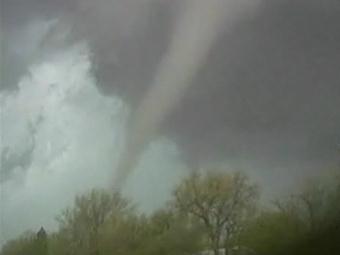

What can you do to protect your family from something like that?
Before a storm
- If you live in an area at high-risk for tornadoes, consider building a safe room in your home. A safe room must be built to withstand high winds and flying debris. The Federal Emergency Management Agency provides free plans for building a safe room in your basement or by reinforcing a bedroom closet or bathroom. You can download safe room information and plans on FEMA’s website.
- Pack an emergency preparedness kit that will meet the needs of you and your family for three days. The kit, of course, will be handy in the wake of any natural or man-made disaster. An emergency preparedness kit needs to include food and water for each member of your family for three days, a battery-powered or hand-crank radio, flashlight, spare batteries, first aid kit, can opener, local maps, moist towelettes, toilet paper, garbage bags and plastic ties for personal sanitation."

Leaders Say Minot Flood Is Lesson For Fargo Area. The details from my favorite news weekly, Bloomburg Businessweek: "A devastating flood in North Dakota's fourth-largest city that wiped out thousands of homes and businesses shows why people in the Fargo and Moorhead, Minn., area should fund a $1.8 billion Red River diversion project, state and local leaders say. Right now there's not enough money to pay the bill, North Dakota Sens. Kent Conrad and John Hoeven said Wednesday during a Senate Budget Committee hearing in a city commission room where Fargo leaders have mapped out strategy to fight three straight major floods. "Those of us on the budget committee, we do have to try and get things to add up," Conrad said. "And right now they don't add up." (photo credit: AP).

90-Day Temperature Outlook. NOAA's Climate Prediction Center is predicting warmer than average temperatures across much of the eastern and southern USA from August thru October.

90-Day Precipitation. CPC is forecasting wetter than average weather into October for the Northern Plains (bad news for residents along the Missouri River) and the southeastern USA.

Here's a good overview of the opportunity from the Insurance Journal and Reuters: "Heat and drought are parching the southern U.S. plains, floods and tornadoes have shattered long-standing records, and the tropical Atlantic is steaming into the traditionally busiest part of the hurricane season. With commodity markets across the globe in the thrall of extreme weather, private-sector meteorologists are increasingly providing custom-tailored weather intelligence to the financial world. This time of year their services are in high demand. “It grows quiet down here from 11 to 12 and it’s because they’re waiting for the midday weather update, waiting for the next piece of information,” said Matt Pierce, analyst for GrainAnalyst.com who has been on the trading floor at the Chicago Board of Trade for more than 10 years. While government forecasters provide broad public advisories, traders, hedge funds and corporations are employing their own staff meteorologists or relying on the 300 U.S. commercial weather vendors for forecasts targeting specific locations and industries. “We let our customers know so they can hedge their risks long in advance, before many in the market are even aware a weather-related event is on the horizon,” said Matt Rogers, a long-range forecaster at Commodity Weather Group LLC."

One Very Big Oops. My brother, Kent, (who lives and works in China) sent me this. Unless someone spent entirely too much time with Photoshop I suspect it's probably true:
(1) An underground garage was being dug on the south
side of the building, to a depth of 4.6 meters (15 ft).
(2) The excavated dirt was being piled up on the north
side of the building, to a height of 10 meters (32 ft).
(3) They dug right up to the base of the building.
Then the rains came.
(4) The building experienced uneven lateral pressure
from north to south.
(5) This resulted in a lateral pressure of 3,000 tonnes,
which was greater than what the un-reinforced pilings
could tolerate. Thus, the building toppled completely
over in a southerly direction.
side of the building, to a depth of 4.6 meters (15 ft).
(2) The excavated dirt was being piled up on the north
side of the building, to a height of 10 meters (32 ft).
(3) They dug right up to the base of the building.
Then the rains came.
(4) The building experienced uneven lateral pressure
from north to south.
(5) This resulted in a lateral pressure of 3,000 tonnes,
which was greater than what the un-reinforced pilings
could tolerate. Thus, the building toppled completely
over in a southerly direction.
* Apparently construction crews built 13 stories on grade, with no basement, and tied it all down to hollow pilings with no rebar.


Climate Stories...

Is The CIA's Climate Work On The Chopping Block? Melting Arctic ice will accelerate deep-sea drilling for oil and natural gas in the coming years, which may lead to conflict with Russia (and Canada?) over deep-sea mineral rights. The Pentagon and CIA is taking climate change seriously, but funding to study the geopolitical implications of a warming earth (and thinning polar ice cap) may get caught up in a political scuffle in Washington D.C. - according to an article at MNN, the Mother News Network: "For Navy Capt. Tim Gallaudet, global warming isn't a political matter — it's a practical one. Over the next few decades, Arctic summers are expected to become ice-free, creating another ocean for the Navy to factor into its long-term planning. "The ice," he says, "doesn't vote." Gallaudet, who holds a Ph.D. in oceanography, is the deputy director of the Navy's climate change task force, which was established in 2009. It's part of a growing effort by the military and intelligence communities to get a grip on the national security implications of global warming. Not surprisingly, some of these programs have received a chilly reception from congressional Republicans. Sen. John Barrasso (R-Wyo.), one of Congress' fiercest opponents of taking official action on climate change, has made it his mission to kill the CIA's Center on Climate Change and National Security; he once offered a budget amendment to shutter the office. "The CIA's resources should be focused on monitoring terrorists in caves — not polar bears on icebergs," he has said. Barrasso's measure failed, but other Republican lawmakers — including the chairman and ranking member of the House and Senate intelligence committees, respectively — have also expressed skepticism about the CIA's climate work."
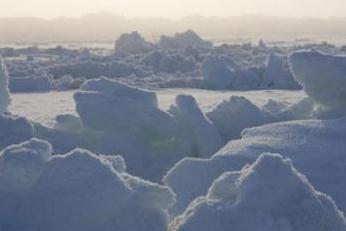
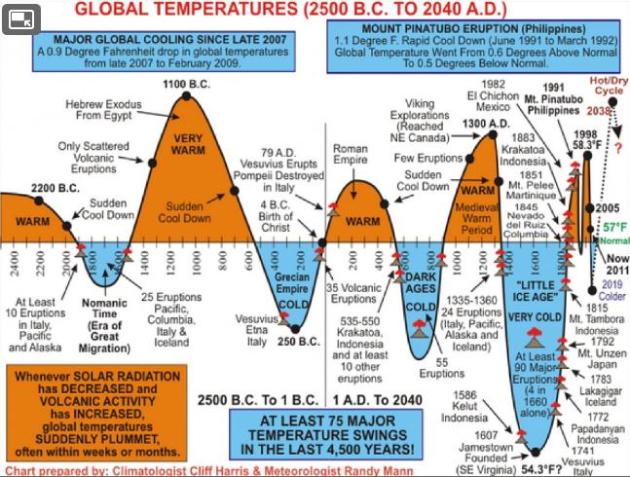
Photo: Long Range Weather - Global Temperatures

Groups Concerned U.Va. Will Turn Over Documents In Global Warming Case. The Washington Post has the latest: "Four groups say they are worried the University of Virginia may unnecessarily disclose private correspondence from scientists in the case involving the work of former professor Michael Mann. The state’s flagship university has fought requests to release documents under Virginia's freedom of information laws to Attorney General Ken Cuccinelli (R), but the groups say they are now concerned about a May 24 agreement U.Va. made to provide some documents to the American Tradition Institute.Environmental Law Center. The four groups — the Union of Concerned Scientists, the American Association of University Professors, the American Geophysical Union and Climate Science Watch — sent U.Va. a letter late Tuesday. “We believe the agreement is in conflict with the university’s previous statements and actions on this issue and it threatens the principles of academic freedom protecting scholarly research,’’ they say in the letter."